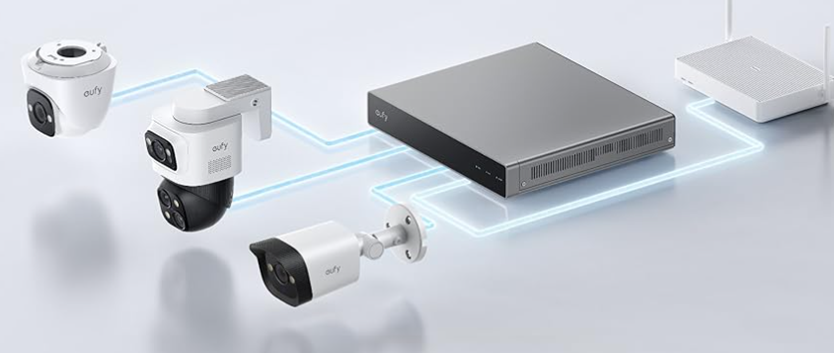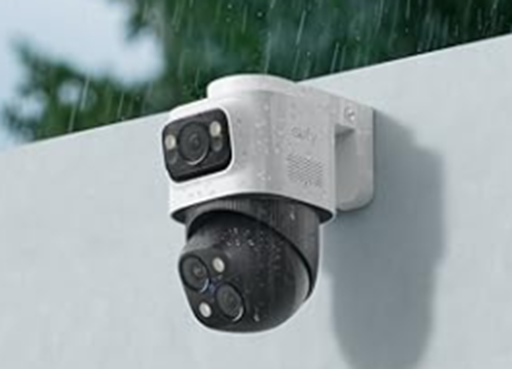August 28, 2025
Uncovering 4K PoE Security Cameras’ Durability Features
4K PoE security cameras are valued for ultra-clear footage, easy installation, and strong durability. Built to handle diverse environments—rainy exteriors, dusty warehouses—they blend high performance with long-lasting resilience. Durability matters for security devices, as they run 24/7 in harsh conditions: weather, physical impact, and electrical fluctuations. A 4K PoE camera’s ability to endure these ensures consistent surveillance, no frequent replacements or downtime. This article explores key durability features making them reliable for indoor/outdoor use, and how each boosts longevity and performance.

Weather and Environmental Resistance
IP Ratings for All-Weather Protection
A key durability feature of 4K PoE Security Cameras is their IP (Ingress Protection) rating, which gauges dust and water resistance. Top models have IP66 or higher: “6” means full dust protection (stopping particles from damaging internals), and the second “6” resists high-pressure water—vital for heavy rain, snow, or spray. Outdoor models often add sealed cable ports and lens/housing gaskets to block moisture. Some have heated lenses to prevent fog/ice in cold, humid conditions, ensuring clear footage in subzero temps or mist. For extreme climates, wide operating temp ranges (e.g., -40°F to 140°F) let them work in desert heat or freezing winters, suiting coastal, industrial, and more locations.

Dust and Corrosion Resistance
Indoor spaces like warehouses, factories, or garages can be harsh too, with dust, chemicals, or fumes harming 4K PoE cameras. Models for these areas have dust-tight housings (matching IP66 ratings) to seal out particles, stopping clogs in motors or sensor damage. For corrosive environments—coastal salt air or industrial chemical fumes—cameras use anti-corrosive materials like stainless steel or powder-coated aluminum, resisting rust and degradation for long-term use. Some add air filters in vents to trap fine dust while letting heat escape, preventing overheating in enclosed, dusty spaces. These features protect internal parts (4K sensor, PoE module) from environmental harm.
Physical and Mechanical Strength
Rugged Housings for Impact Resistance
4K PoE security cameras have tough housings to resist physical impact—from accidental bumps, vandalism, or falling debris. Outdoor models use heavy-duty materials like aluminum alloy or reinforced plastic, which absorb shocks better than lightweight plastics. Popular dome-style 4K PoE cameras have vandal-resistant domes (polycarbonate or tempered glass) that stand up to scratches, cracks, and prying. Bullet-style ones feature rigid cylindrical housings to deflect impacts, protecting lenses and internal parts. Sturdy steel or aluminum mounting brackets keep cameras secure on walls, poles, or ceilings—even in high winds or after minor collisions (e.g., a stray warehouse ladder). This robustness cuts misalignment or damage risk, keeping coverage consistent.
Reinforced Internal Components
Beyond external protection, 4K PoE cameras have reinforced internal parts to handle mechanical stress. Their PoE module—converting Ethernet power to camera power—is often insulated, resisting electrical surges or voltage fluctuations (common in industrial settings with heavy machinery) to avoid damage from spikes, keeping cameras working in storms or equipment malfunctions. PTZ 4K PoE cameras have durable motors with sealed bearings and heat-resistant wiring, handling frequent movement without overheating or wearing out. Fixed-lens models have stabilized sensors and circuit boards, reducing vibration damage in busy factories or streets. These internal reinforcements keep core functions reliable despite constant use, cutting repair needs.
Long-Term Reliability and Maintenance
Low-Maintenance Design
Durability for 4K PoE cameras also means minimal upkeep—and they excel in this area. Their sealed, weatherproof, and dust-tight designs cut down on frequent cleaning needs, as debris or moisture rarely gets inside to disrupt functionality. What’s more, PoE technology eliminates the hassle of replacing dead batteries or faulty power adapters, since power is delivered via Ethernet cables. Many models also have self-diagnostic features: they alert users to potential issues (like lens obstructions or low power) early, before failures happen, enabling proactive fixes. This low-maintenance design keeps the cameras running consistently for years with little hands-on intervention.
Extended Lifespan and Warranty Support
Manufacturers of high-quality 4K PoE cameras stand behind their durability claims with generous long-term warranties, usually ranging from 2 to 5 years. This lengthy coverage isn’t just a perk—it reflects the brand’s confidence in the cameras’ robust build quality, covering issues like material defects or workmanship flaws to give users peace of mind. What’s more, these cameras are designed to be future-compatible: they work with upcoming PoE standards and keep up with evolving 4K technology. This means they stay functional as security systems advance, letting their useful lifespan outlast cheaper, less durable alternatives that quickly become obsolete.
Conclusion
The durability of 4K PoE security cameras stems from a suite of robust features: they boast IP66 ratings for strong weather and dust resistance, rugged housings that stand up to impacts, and reinforced internal components (like insulated PoE modules and durable PTZ motors) that resist wear. Plus, their low-maintenance designs—sealed builds cutting cleaning needs, PoE eliminating battery swaps, and self-diagnostics enabling proactive fixes—keep them running smoothly. Whether facing heavy rain, thick dust, physical knocks, or extreme temperatures, these cameras maintain consistent performance for uninterrupted surveillance. For users wanting clarity, convenience, and long-term reliability, 4K PoE cameras are a durable, cost-effective security choice.
